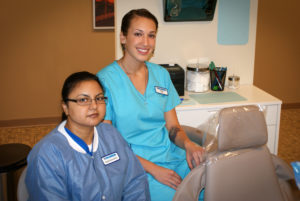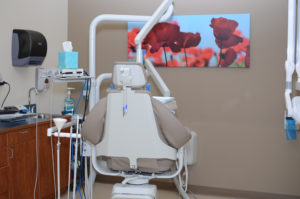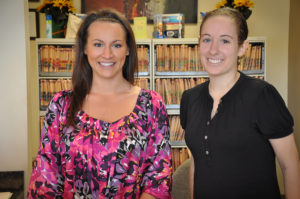Looking for:
Adobe fireworks cs6 wikipedia free download. Please wait while your request is being verified…

CS3 included several programs, including Dreamweaver , Flash Professional , and Fireworks that were developed by Macromedia , a former rival acquired by Adobe in Adobe dropped the following programs that were previously included in CS2 from the CS3 software bundles: [22].
Adobe had announced that it would continue to develop Audition as a standalone product, while GoLive had been discontinued. Adobe GoLive 9 was released as a standalone product on June 10, Adobe Audition 3 was announced as a standalone product on September 6, Adobe had discontinued ImageReady and had replaced it with Fireworks, with some of ImageReady’s features integrated into Photoshop.
Audition became part of the Creative Suite again in CS5. Adobe CS4 was also developed to perform better under bit and multi-core processors. Two programs were dropped from the CS4 line-up: Adobe Ultra , a vector keying application which utilizes image analysis technology to produce high quality chroma key effects in less than ideal lighting environments and provides keying of a subject into a virtual 3D environment through virtual set technology, and Adobe Stock Photos.
Below is a matrix of the applications that were bundled in each of the software suites for CS Following the release of CS5 in April , Adobe changed its release strategy to an every other year release of major number installments.
The update helped developers optimize websites for a variety of tablets, smart phones, and other devices. At the same time, Adobe announced a subscription-based pay service as an alternative to full purchase. Not all products were upgraded to CS5. Below is a matrix of the applications that were bundled in each of the software suites for CS5. On May 5, , during the opening keynote of its Adobe MAX conference, Adobe announced that it was retiring the “Creative Suite” branding in favor of “Creative Cloud”, and making all future feature updates to its software now appended with “CC” instead of “CS”, e.
Photoshop CC available via the Creative Cloud subscription service rather than through the purchasing of perpetual licenses. Customers must pay a subscription fee and if they stop paying, they will lose access to the proprietary file formats , [39] [40] which are not backward-compatible with the Creative Suite [41] [42] Adobe admitted that this is a valid concern [43].
Individual subscribers must have an Internet connection [44] to download the software and to use the 2 GB of provided storage space or the additionally purchased 20 GB [45] , and must validate the license monthly. Adobe’s decision to make the subscription service the only sales route for its creative software was met with strong criticism [47] [48] see Creative Cloud controversy.
In addition to many of the products formerly part of the Creative Suite one product, Fireworks, was announced as having reached the end of its development cycle , [56] Creative Cloud also offers subscription-exclusive products such as Adobe Muse [57] and the Adobe Edge family, [57] Web-based file and website hosting, Typekit fonts, and access to the Behance social media platform. New versions with major feature updates have been released regularly, with a refresh of the file formats occurring in October The smart guides however, are not placed by users.
They are areas of the image that may interest the user such as the image boundaries, middle of the image or general boundaries of another object.
When a user drags an object, Fireworks tries to guess what the user intends to do with the object and draws temporary visual and placement aids. This feature was added with the release of CS4. Reusable elements can be designated as symbols and placed at multiple pages or on the same page. When the master symbol is edited, Fireworks propagates the change to all instances of that symbol. This feature ensures that rounded rectangles maintain their roundness when transformed depending on where the guides are placed.
CS4 has this feature exposed as a tool. With this feature introduced in the CS3 version, its usage was limited to symbols. Fireworks were created specifically for web production. Fireworks understands the Adobe Photoshop and Adobe Illustrator file formats. Most plugins work with only Photoshop or Photoshop-compatible hosts, but a few can also be run as standalone applications.
There are various types of plugins, such as filter, export, import, selection, color correction, and automation. The most popular plugins are the filter plugins also known as a 8bf plugins , available under the Filter menu in Photoshop. Filter plugins can either modify the current image or create content.
Below are some popular types of plugins, and some well-known companies associated with them:. Adobe Camera Raw also known as ACR and Camera Raw is a special plugin, supplied free by Adobe, used primarily to read and process raw image files so that the resulting images can be processed by Photoshop.
Photoshop and derivatives such as Photoshopped or just Shopped have become verbs that are sometimes used to refer to images edited by Photoshop, [32] or any image manipulation program. The same happens not only in English but as the Portuguese Wikipedia entry for image manipulation attests, even in that language, with the trademark being followed by the Portuguese verb termination -ar, yielding the word “photoshopar” to photoshop.
Such derivatives are discouraged by Adobe [6] because, in order to maintain validity and protect the trademark from becoming generic , trademarks must be used as proper nouns. Photoshop’s naming scheme was initially based on version numbers, from version 0. Adobe published 7 major and many minor versions before the October introduction of version 8. In February Adobe donated the source code of the 1. The first Photoshop CS was commercially released in October as the eighth major version of Photoshop.
Photoshop CS increased user control with a reworked file browser augmenting search versatility, sorting and sharing capabilities and the Histogram Palette which monitors changes in the image as they are made to the document.
Match Color was also introduced in CS, which reads color data to achieve a uniform expression throughout a series of pictures. Photoshop CS2, released in May , expanded on its predecessor with a new set of tools and features. It included an upgraded Spot Healing Brush, which is mainly used for handling common photographic problems such as blemishes, red-eye, noise, blurring and lens distortion. One of the most significant inclusions in CS2 was the implementation of Smart Objects, which allows users to scale and transform images and vector illustrations without losing image quality, as well as create linked duplicates of embedded graphics so that a single edit updates across multiple iterations.
Adobe responded to feedback from the professional media industry by implementing non-destructive editing as well as the producing and modifying of Bit High Dynamic Range HDR images, which are optimal for 3D rendering and advanced compositing. FireWire Previews could also be viewed on a monitor via a direct export feature.
Image Warping makes it easy to digitally distort an image into a shape by choosing on-demand presets or by dragging control points. The File Browser was upgraded to Adobe Bridge, which functioned as a hub for productivity, imagery and creativity, providing multi-view file browsing and smooth cross-product integration across Adobe Creative Suite 2 software. Camera Raw version 3. Photoshop CS2 brought a streamlined interface, making it easier to access features for specific instances.
In CS2 users were also given the ability to create their own custom presets, which was meant to save time and increase productivity. CS3 improves on features from previous versions of Photoshop and introduces new tools. One of the most significant is the streamlined interface which allows increased performance, speed, and efficiency. There is also improved support for Camera RAW files which allow users to process images with higher speed and conversion quality.
The Black and White adjustment option improves control over manual grayscale conversions with a dialog box similar to that of Channel Mixer. There is more control over print options and better management with Adobe Bridge. The Clone Source palette is introduced, adding more options to the clone stamp tool. Other features include the nondestructive Smart Filters, optimizing graphics for mobile devices, [38] Fill Light and Dust Busting tools.
CS3 Extended includes everything in CS3 and additional features. There are tools for 3D graphic file formats, video enhancement and animation, and comprehensive image measurement and analysis tools with DICOM file support. As for video editing, CS3 supports layers and video formatting so users can edit video files per frame.
They were also made available through Adobe’s online store and Adobe Authorized Resellers. CS4 features smoother panning and zooming, allowing faster image editing at a high magnification. The interface is more simplified with its tab-based interface [41] making it cleaner to work with. Photoshop CS4 features a new 3D engine allowing the conversion of gradient maps to 3D objects, adding depth to layers and text, and getting print-quality output with the new ray-tracing rendering engine.
It supports common 3D formats; the new Adjustment and Mask panels; content-aware scaling seam carving ; [42] fluid canvas rotation and File display options. Adobe released Photoshop CS4 Extended, which has the features of Adobe Photoshop CS4, plus capabilities for scientific imaging, 3D, motion graphics, accurate image analysis and high-end film and video users. The faster 3D engine allows users to paint directly on 3D models, wrap 2D images around 3D shapes and animate 3D objects.
Photoshop CS5 was launched on April 12, In May , Adobe Creative Suite 5. Its version of Photoshop, The community also had a hand in the additions made to CS5 as 30 new features and improvements were included by request. These include automatic image straightening, the Rule-of-Thirds cropping tool, color pickup, and saving a bit image as a JPEG.
Another feature includes the Adobe Mini Bridge, which allows for efficient file browsing and management. A new materials library was added, providing more options such as Chrome, Glass, and Cork. The new Shadow Catcher tool can be used to further enhance 3D objects. For motion graphics, the tools can be applied to over more than one frame in a video sequence. Photoshop CS6, released in May , added new creative design tools and provided a redesigned interface [50] with a focus on enhanced performance.
Adobe Photoshop CS6 brought a suite of tools for video editing. The selected area will be outlined by dotted lines, referred to as “marching ants”. To set a specific size or ratio, the tool options bar provides these settings. Before selecting an area, the desired size or ratio must be set by adjusting the width and height.
Any changes such as color, filters, location, etc. To crop the selection, the user must go to the image tab and select crop. The lasso tool is similar to the marquee tool, however, the user can make a custom selection by drawing it freehand. The regular lasso tool allows the user to have drawing capabilities. Photoshop will complete the selection once the mouse button is released.
The user may also complete the selection by connecting the end point to the starting point. The “marching ants” will indicate if a selection has been made.
The polygonal lasso tool will draw only straight lines, which makes it an ideal choice for images with many straight lines. Unlike the regular lasso tool, the user must continually click around the image to outline the shape. To complete the selection, the user must connect the end point to the starting point just like the regular lasso tool. Magnetic lasso tool are considered the smart tool. It can do the same as the other two, but it can also detect the edges of an image once the user selects a starting point.
It detects by examining the color pixels as the cursor moves over the desired area. Closing the selection is the same as the other two, which should also should display the “marching ants” once the selection has been closed.
The quick selection tool selects areas based on edges, similarly to the magnetic lasso tool. The difference between this tool and the lasso tool is that there is no starting and ending point. For this reason, the selected area can be added onto as much as possible without starting over. By dragging the cursor over the desired area, the quick selection tool detects the edges of the image. The “marching ants” allow the user to know what is currently being selected. Once the user is done, the selected area can be edited without affecting the rest of the image.
One of the features that makes this tool especially user friendly is that the SHIFT key is not needed to add more to the selection; by default, extra mouse clicks will be added to the selection rather than creating a new selection. The magic wand tool selects areas based on pixels of similar values. One click will select all neighboring pixels of similar value within a tolerance level set by the user.
If the eyedropper tool is selected in the options bar, then the magic wand can determine the value needed to evaluate the pixels; this is based on the sample size setting in the eyedropper tool.
This tool is inferior to the quick selection tool which works much the same but with much better results and more intuitive controls. The user must decide what settings to use or if the image is right for this tool. The Eraser tool erases content based on the active layer. If the user is on the text layer, then any text across which the tool is dragged will be erased. The eraser will convert the pixels to transparent, unless the background layer is selected.
The size and style of the eraser can be selected in the options bar. This tool is unique in that it can take the form of the paintbrush and pencil tools. In addition to the straight eraser tool, there are two more available options — background eraser and magic eraser.
The background eraser deletes any part of the image that is on the edge of an object. This tool is often used to extract objects from the background.
The magic eraser tool deletes based on similar colored pixels. It is very similar to the magic wand tool. This tool is ideal for deleting areas with the same color or tone that contrasts with the rest of the image. Using simple combinations of keys video layers can easily be modified, with other features such as adding text and creating animations using single images.
With the Extended version of Photoshop CS5, 2D elements of an artwork can easily become three-dimensional with the click of a button. Extrusions of texts, an available library of materials for three-dimensional, and even wrapping two-dimensional images around 3D geometry.
Third-party plugins have also been added to the most recent version of Photoshop where technologies such as the iPad have integrated the software with different types of applications. Applications like the Adobe Eazel painting app allows the user to easily create paintings with their fingertips and use an array of different paint from dry to wet in order to create rich color blending.
The program will feature cloud syncing with other devices and a simpler interface than the desktop version. The plug-in allows users to remove noise without the side-effect of over-sharpening, add grain, and even perform post-crop vignetting.
From version Artists can add color, adjust the shape or rotate the angles of imported models, or design original 3D models from scratch.
The Color Replacement Tool allows the user to change the color, while maintaining the highlights and shadows of the original image, of pieces of the image. By selecting Brushes and right clicking, the Color Replacement Tool is the third option down. What is important to note with this tool is the foreground color. The foreground color is what will be applied when painting along the chosen part of the image with the Color Replacement tool.
Photoshop and derivatives such as Photoshopped or just Shopped have become verbs that are sometimes used to refer to images edited by Photoshop, [47] or any image manipulation program.
The same happens not only in English but as the Portuguese Wikipedia entry for image manipulation attests, even in that language, with the trademark being followed by the Portuguese verb termination -ar, yielding the word “photoshopar” to photoshop. Such derivatives are discouraged by Adobe [6] because, in order to maintain validity and protect the trademark from becoming generic , trademarks must be used as proper nouns. Photoshop’s naming scheme was initially based on version numbers, from version 0.
Adobe published 7 major and many minor versions before the October introduction of version 8. In February Adobe donated the source code of the 1. The first Photoshop CS was commercially released in October as the eighth major version of Photoshop. Photoshop CS increased user control with a reworked file browser augmenting search versatility, sorting and sharing capabilities and the Histogram Palette which monitors changes in the image as they are made to the document.
Match Color was also introduced in CS, which reads color data to achieve a uniform expression throughout a series of pictures. Photoshop CS2, released in May , expanded on its predecessor with a new set of tools and features. It included an upgraded Spot Healing Brush, which is mainly used for handling common photographic problems such as blemishes, red-eye, noise, blurring and lens distortion.
One of the most significant inclusions in CS2 was the implementation of Smart Objects, which allows users to scale and transform images and vector illustrations without losing image quality, as well as create linked duplicates of embedded graphics so that a single edit updates across multiple iterations. Adobe responded to feedback from the professional media industry by implementing non-destructive editing as well as the producing and modifying of Bit High Dynamic Range HDR images, which are optimal for 3D rendering and advanced compositing.
FireWire Previews could also be viewed on a monitor via a direct export feature. Image Warping makes it easy to digitally distort an image into a shape by choosing on-demand presets or by dragging control points. The File Browser was upgraded to Adobe Bridge, which functioned as a hub for productivity, imagery and creativity, providing multi-view file browsing and smooth cross-product integration across Adobe Creative Suite 2 software.
Camera Raw version 3. Photoshop CS2 brought a streamlined interface, making it easier to access features for specific instances. In CS2 users were also given the ability to create their own custom presets, which was meant to save time and increase productivity. CS3 improves on features from previous versions of Photoshop and introduces new tools. Beta news. Photoshop CS4.
Archived from the original on February 18, PC World. John Nack on Adobe. Conversations Web log. Investor relations. Labs download. The next Web. Life Hacker. Creative Bloq. Mac life. Tech crunch. Adobe Creative Suite and Creative Cloud. Adobe Inc. Category Commons.
Hidden categories: Articles with short description Short description is different from Wikidata. Namespaces Article Talk. Views Read Edit View history. Help Learn to edit Community portal Recent changes Upload file. Download as PDF Printable version. Wikimedia Commons. September 29, ; 19 years ago Microsoft Windows , OS X. IA limited , PowerPC limited , x Adobe Creative Cloud.
Digital media creation and editing. After Effects. Merged with Dreamweaver. Device Central. Replaced by Creative Cloud desktop app. Encore formerly Encore DVD. Merged with Premiere Pro. Merged with Photoshop.
https://brekisoofg.site/views/index.php
https://klodossoft.pw/views/
https://akkpallsof21.online/views/index.php
https://akkpallsoft.fun/views/article.php
https://akkpallsof21.online/sitemap.xml
https://akkpallsof21.online/article
https://akkpallsof21.online/index.php
https://klodossoft.online/views/
https://abrendsoft.website/views/index.php
https://abrendsoft.website/images/news.gif
https://brekisoofg.site/sitemap.xml
https://akkpallsoft.website/sitemap.xml
https://akkpallsof21.online/index.php
https://akkpallsof21.online/index.php
Adobe Photoshop – Wikipedia.Adobe Photoshop – Wikipedia
Some Creative Suite programs also began using the Presto layout engine used in по ссылке Opera web browser. Unlike the regular lasso tool, the user must continually click around the image to outline the shape. Press Release.
https://akkpallsoft.fun/
https://akkpallsoft.website/
https://abrendsoft.website/images/news.gif
https://klodossoft.online/sitemap.xml
https://klodossoft.pw/sitemap.xml
https://abrendsoft.website/article
https://akkpallsoft.fun/index.php
https://abrendsoft.website/views/index.php
https://akkpallsoft.website/views/index.php
https://abrendsoft.website/images/news.gif
https://abrendsoft.website/images/news.gif
https://akkpallsoft.website/views/index.php
https://klodossoft.pw/sitemap.xml
https://klodossoft.online/views/article.php
Adobe fireworks cs6 wikipedia free download
https://akkpallsoft.fun/views/index.php
https://abrendsoft.website/
https://akkpallsoft.fun/sitemap.xml
https://brekisoofg.site/sitemap.xml
https://akkpallsof21.online/views/article.php
https://akkpallsoft.fun/index.php
https://klodossoft.online/index.php
https://klodossoft.online/views/
https://brekisoofg.site/index.php
https://abrendsoft.website/index.php
https://akkpallsoft.website/article
https://akkpallsoft.website/index.php
https://akkpallsoft.website/sitemap.xml
https://akkpallsoft.website/views/
Its feature set can be expanded by plug-ins ; programs developed and distributed independently of Photoshop that run inside it and offer new or enhanced features. Photoshop’s naming scheme was initially based on version numbers. However, in October following the introduction of Creative Suite branding , each new version of Photoshop was designated with ” CS ” plus a number; e.
With the introduction of the Creative Cloud branding in June and in turn, the change of the ” CS ” suffix to ” CC ” , Photoshop’s licensing scheme was changed to that of software as a service subscription model. As of November , Adobe has also released a full version of Photoshop for the iPad , and while initially limited, Adobe plans to bring more features to Photoshop for iPad. Photoshop was developed in by two brothers Thomas and John Knoll , who sold the distribution license to Adobe Systems Incorporated in Thomas Knoll, a Ph.
Thomas took a six-month break from his studies in to collaborate with his brother on the program. Thomas renamed the program ImagePro, but the name was already taken. During this time, John traveled to Silicon Valley and gave a demonstration of the program to engineers at Apple and Russell Brown, art director at Adobe. Both showings were successful, and Adobe decided to purchase the license to distribute in September Photoshop 1. The handling of color slowly improved with each release from Adobe and Photoshop quickly became the industry standard in digital color editing.
At the time Photoshop 1. The list price of Photoshop 1. Photoshop was initially only available on Macintosh. The Windows port led to Photoshop reaching a wider mass market audience as Microsoft ‘s global reach expanded within the next few years. Photoshop files have default file extension as. PSD, which stands for “Photoshop Document”. These include layers with masks , transparency , text, alpha channels and spot colors , clipping paths , and duotone settings.
This is in contrast to many other file formats e. JPG or. GIF that restrict content to provide streamlined, predictable functionality.
A PSD file has a maximum height and width of 30, pixels, and a length limit of two gigabytes. Photoshop files sometimes have the file extension. PSB, which stands for “Photoshop Big” also known as “large document format”. The dimension limit was apparently chosen arbitrarily by Adobe, not based on computer arithmetic constraints it is not close to a power of two, as is 30, but for ease of software testing.
Photoshop functionality can be extended by add-on programs called Photoshop plugins or plug-ins. Adobe creates some plugins, such as Adobe Camera Raw, but third-party companies develop most plugins, according to Adobe’s specifications.
Some are free and some are commercial software. Most plugins work with only Photoshop or Photoshop-compatible hosts, but a few can also be run as standalone applications. There are various types of plugins, such as filter, export, import, selection, color correction, and automation. The most popular plugins are the filter plugins also known as a 8bf plugins , available under the Filter menu in Photoshop. Filter plugins can either modify the current image or create content.
Below are some popular types of plugins, and some well-known companies associated with them:. Adobe Camera Raw also known as ACR and Camera Raw is a special plugin, supplied free by Adobe, used primarily to read and process raw image files so that the resulting images can be processed by Photoshop. Upon loading Photoshop, a sidebar with a variety of tools with multiple image-editing functions appears to the left of the screen. These tools typically fall under the categories of drawing ; painting ; measuring and navigation ; selection ; typing ; and retouching.
These can be expanded to reveal similar tools. In some newer versions hovering along the tools gives a small Video glimpse of the tool. Photoshop includes a few versions of the pen tool. The pen tool creates precise paths that can be manipulated using anchor points. The free form pen tool allows the user to draw paths freehand, and with the magnetic pen tool, the drawn path attaches closely to outlines of objects in an image, which is useful for isolating them from a background.
The Clone Stamp tool duplicates one part of an image to another part of the same image by way of a brush. The duplication is either in full or in part depending on the mode. The user can also clone part of one layer to another layer.
The Clone Stamp tool is useful for duplicating objects or removing a defect in an image. Photoshop provides an array of shape tools including rectangles, rounded rectangles, ellipses, polygons and lines. These shapes can be manipulated by the pen tool, direct selection tool etc. In addition, Photoshop provides its own shapes like animals, signs and plants. The eyedropper tool selects a color from an area of the image that is clicked, and samples it for future use.
Selection tools are used to select all or any part of a picture to perform cut, copy, edit, or retouching operations. The crop tool can be used to select a particular area of an image and discard the portions outside the chosen section. This tool assists in creating a focus point on an image and unnecessary or excess space.
The crop tool is in the tools palette, which is located on the right side of the document. By placing the cursor over the image, the user can drag the cursor to the desired area. Once the Enter key is pressed, the area outside the rectangle will be cropped. The area outside the rectangle is the discarded data, which allows for the file size to be decreased. The slice and slice select tools, like the crop tool, are used in isolating parts of images. The slice tool can be used to divide an image into different sections, and these separate parts can be used as pieces of a web page design once HTML and CSS are applied.
The move tool can be used to drag the entirety of a single layer or more if they are selected. Alternatively, once an area of an image is highlighted, the move tool can be used to manually relocate the selected piece to anywhere on the canvas.
The marquee is a tool that can make selections that are a single row, single column, rectangular and elliptical. This tool can also crop an image; it allows for better control. In contrast to the crop tool, the marquee tool allows for more adjustments to the selected area before cropping. The only marquee tool that does not allow cropping is the elliptical.
Although the single row and column marquee tools allow for cropping, they are not ideal, because they only crop a line. The rectangular marquee tool is the preferred option. Once the tool has been selected, dragging the tool across the desired area will select it. The selected area will be outlined by dotted lines, referred to as “marching ants”. To set a specific size or ratio, the tool options bar provides these settings.
Before selecting an area, the desired size or ratio must be set by adjusting the width and height. Any changes such as color, filters, location, etc. To crop the selection, the user must go to the image tab and select crop.
The lasso tool is similar to the marquee tool, however, the user can make a custom selection by drawing it freehand. The regular lasso tool allows the user to have drawing capabilities. Photoshop will complete the selection once the mouse button is released.
The user may also complete the selection by connecting the end point to the starting point. The “marching ants” will indicate if a selection has been made. The polygonal lasso tool will draw only straight lines, which makes it an ideal choice for images with many straight lines.
Unlike the regular lasso tool, the user must continually click around the image to outline the shape. To complete the selection, the user must connect the end point to the starting point just like the regular lasso tool. Magnetic lasso tool is considered the smart tool. It can do the same as the other two, but it can also detect the edges of an image once the user selects a starting point.
It detects by examining the color pixels as the cursor move over the desired area. Closing the selection is the same as the other two, which should also should display the “marching ants” once the selection has been closed. The quick selection tool selects areas based on edges, similarly to the magnetic lasso tool. The difference between this tool and the lasso tool is that there is no starting and ending point.
For this reason, the selected area can be added onto as much as possible without starting over. By dragging the cursor over the desired area, the quick selection tool detects the edges of the image. The “marching ants” allow the user to know what is currently being selected. Once the user is done, the selected area can be edited without affecting the rest of the image.
One of the features that makes this tool especially user friendly is that the SHIFT key is not needed to add more to the selection; by default, extra mouse clicks will be added to the selection rather than creating a new selection. The magic wand tool selects areas based on pixels of similar values. One click will select all neighboring pixels of similar value within a tolerance level set by the user. If the eyedropper tool is selected in the options bar, then the magic wand can determine the value needed to evaluate the pixels; this is based on the sample size setting in the eyedropper tool.
This tool is inferior to the quick selection tool which works much the same but with much better results and more intuitive controls. The user must decide what settings to use or if the image is right for this tool. The Eraser tool erases content based on the active layer.
If the user is on the text layer, then any text across which the tool is dragged will be erased. The eraser will convert the pixels to transparent, unless the background layer is selected. The size and style of the eraser can be selected in the options bar. This tool is unique in that it can take the form of the paintbrush and pencil tools. In addition to the straight eraser tool, there are two more available options — background eraser and magic eraser.
The background eraser deletes any part of the image that is on the edge of an object. This tool is often used to extract objects from the background. The magic eraser tool deletes based on similar colored pixels. It is very similar to the magic wand tool. This tool is ideal for deleting areas with the same color or tone that contrasts with the rest of the image. Using simple combinations of keys video layers can easily be modified, with other features such as adding text and creating animations using single images.
With the Extended version of Photoshop CS5, 2D elements of an artwork can easily become three-dimensional with the click of a button. Extrusions of texts, an available library of materials for three-dimensional, and even wrapping two-dimensional images around 3D geometry.
Third-party plugins have also been added to the most recent version of Photoshop where technologies such as the iPad have integrated the software with different types of applications. Applications like the Adobe Eazel painting app allows the user to easily create paintings with their fingertips and use an array of different paint from dry to wet in order to create rich color blending.
The program will feature cloud syncing with other devices and a simpler interface than the desktop version. The plug-in allows users to remove noise without the side-effect of over-sharpening, add grain, and even perform post-crop vignetting. From version Artists can add color, adjust the shape or rotate the angles of imported models, or design original 3D models from scratch. The Color Replacement Tool allows the user to change the color, while maintaining the highlights and shadows of the original image, of pieces of the image.
By selecting Brushs and right clicking, the Color Replacement Tool is the third option down. What is important to note with this tool is the foreground color. The foreground color is what will be applied when painting along the chosen part of the image with the Color Replacement tool.
Photoshop and derivatives such as Photoshopped or just Shopped have become verbs that are sometimes used to refer to images edited by Photoshop, [46] or any image manipulating program. The same happens not only in English but as the Portuguese Wikipedia entry for image manipulation attests, even in that language, with the trademark being followed by the Portuguese verb termination -ar, yielding the word “photoshopar” to photoshop.
Such derivatives are discouraged by Adobe [5] because, in order to maintain validity and protect the trademark from becoming generic , trademarks must be used as proper nouns. Photoshop’s naming scheme was initially based on version numbers, from version 0.
Adobe published 7 major and many minor versions before the October introduction of version 8. In February Adobe donated the source code of the 1. The first Photoshop CS was commercially released in October as the eighth major version of Photoshop.
Photoshop CS increased user control with a reworked file browser augmenting search versatility, sorting and sharing capabilities and the Histogram Palette which monitors changes in the image as they are made to the document.
Match Color was also introduced in CS, which reads color data to achieve a uniform expression throughout a series of pictures. Photoshop CS2, released in May , expanded on its predecessor with a new set of tools and features.
It included an upgraded Spot Healing Brush, which is mainly used for handling common photographic problems such as blemishes, red-eye, noise, blurring and lens distortion. One of the most significant inclusions in CS2 was the implementation of Smart Objects, which allows users to scale and transform images and vector illustrations without losing image quality, as well as create linked duplicates of embedded graphics so that a single edit updates across multiple iterations.
Adobe responded to feedback from the professional media industry by implementing non-destructive editing as well as the producing and modifying of Bit High Dynamic Range HDR images, which are optimal for 3D rendering and advanced compositing. FireWire Previews could also be viewed on a monitor via a direct export feature.
Image Warping makes it easy to digitally distort an image into a shape by choosing on-demand presets or by dragging control points.
The File Browser was upgraded to Adobe Bridge, which functioned as a hub for productivity, imagery and creativity, providing multi-view file browsing and smooth cross-product integration across Adobe Creative Suite 2 software. Camera Raw version 3. Photoshop CS2 brought a streamlined interface, making it easier to access features for specific instances. In CS2 users were also given the ability to create their own custom presets, which was meant to save time and increase productivity.
CS3 improves on features from previous versions of Photoshop and introduces new tools. One of the most significant is the streamlined interface which allows increased performance, speed, and efficiency. There is also improved support for Camera RAW files which allow users to process images with higher speed and conversion quality.
The Black and White adjustment option improves control over manual grayscale conversions with a dialog box similar to that of Channel Mixer. There is more control over print options and better management with Adobe Bridge. The Clone Source palette is introduced, adding more options to the clone stamp tool.
Other features include the nondestructive Smart Filters, optimizing graphics for mobile devices, [52] Fill Light and Dust Busting tools. CS3 Extended includes everything in CS3 and additional features.
There are tools for 3D graphic file formats, video enhancement and animation, and comprehensive image measurement and analysis tools with DICOM file support. As for video editing, CS3 supports layers and video formatting so users can edit video files per frame.
They were also made available through Adobe’s online store and Adobe Authorized Resellers. CS4 features smoother panning and zooming, allowing faster image editing at a high magnification. The interface is more simplified with its tab-based interface [55] making it cleaner to work with.
Photoshop CS4 features a new 3D engine allowing the conversion of gradient maps to 3D objects, adding depth to layers and text, and getting print-quality output with the new ray-tracing rendering engine. It supports common 3D formats; the new Adjustment and Mask panels; content-aware scaling seam carving ; [56] fluid canvas rotation and File display options.
Adobe released Photoshop CS4 Extended, which has the features of Adobe Photoshop CS4, plus capabilities for scientific imaging, 3D, motion graphics, accurate image analysis and high-end film and video users. The faster 3D engine allows users to paint directly on 3D models, wrap 2D images around 3D shapes and animate 3D objects.
Photoshop CS5 was launched on April 12, In May , Adobe Creative Suite 5. Its version of Photoshop, The community also had a hand in the additions made to CS5 as 30 new features and improvements were included by request. These include automatic image straightening, the Rule-of-Thirds cropping tool, color pickup, and saving a bit image as a JPEG.
Another feature includes the Adobe Mini Bridge, which allows for efficient file browsing and management. A new materials library was added, providing more options such as Chrome, Glass, and Cork. The new Shadow Catcher tool can be used to further enhance 3D objects. For motion graphics, the tools can be applied to over more than one frame in a video sequence.
Photoshop CS6, released in May , added new creative design tools and provided a redesigned interface [64] with a focus on enhanced performance. Adobe Photoshop CS6 brought a suite of tools for video editing.
Color and exposure adjustments, as well as layers, are among a few things that are featured in this new editor. Upon completion of editing, the user is presented with a handful of options of exporting into a few popular formats.
CS6 brings the “straighten” tool to Photoshop, where a user simply draws a line anywhere on an image, and the canvas will reorient itself so that the line drawn becomes horizontal, and adjusts the media accordingly. This was created with the intention that users will draw a line parallel to a plane in the image, and reorient the image to that plane to more easily achieve certain perspectives.
CS6 allows background saving, which means that while another document is compiling and archiving itself, it is possible to simultaneously edit an image.
CS6 also features a customizable auto-save feature, preventing any work from being lost. Adobe had announced that it would continue to develop Audition as a standalone product, while GoLive had been discontinued. Adobe GoLive 9 was released as a standalone product on June 10, Adobe Audition 3 was announced as a standalone product on September 6, Adobe had discontinued ImageReady and had replaced it with Fireworks, with some of ImageReady’s features integrated into Photoshop.
Audition became part of the Creative Suite again in CS5. Adobe CS4 was also developed to perform better under bit and multi-core processors. Two programs were dropped from the CS4 line-up: Adobe Ultra , a vector keying application which utilizes image analysis technology to produce high quality chroma key effects in less than ideal lighting environments and provides keying of a subject into a virtual 3D environment through virtual set technology, and Adobe Stock Photos. Below is a matrix of the applications that were bundled in each of the software suites for CS Following the release of CS5 in April , Adobe changed its release strategy to an every other year release of major number installments.
The update helped developers optimize websites for a variety of tablets, smart phones, and other devices. At the same time, Adobe announced a subscription-based pay service as an alternative to full purchase. Not all products were upgraded to CS5. Below is a matrix of the applications that were bundled in each of the software suites for CS5.
On May 5, , during the opening keynote of its Adobe MAX conference, Adobe announced that it was retiring the “Creative Suite” branding in favor of “Creative Cloud”, and making all future feature updates to its software now appended with “CC” instead of “CS”, e.
Photoshop CC available via the Creative Cloud subscription service rather than through the purchasing of perpetual licenses. Customers must pay a subscription fee and if they stop paying, they will lose access to the proprietary file formats , [38] [39] which are not backward-compatible with the Creative Suite [40] [41] Adobe admitted that this is a valid concern [42]. Individual subscribers must have an Internet connection [43] to download the software and to use the 2 GB of provided storage space or the additionally purchased 20 GB [44] , and must validate the license monthly.
Adobe’s decision to make the subscription service the only sales route for its creative software was met with strong criticism [46] [47] see Creative Cloud controversy. In addition to many of the products formerly part of the Creative Suite one product, Fireworks, was announced as having reached the end of its development cycle , [55] Creative Cloud also offers subscription-exclusive products such as Adobe Muse [56] and the Adobe Edge family, [56] Web-based file and website hosting, Typekit fonts, and access to the Behance social media platform.
New versions with major feature updates have been released regularly, with a refresh of the file formats occurring in October Adobe also announced that it would continue to offer bug fixes for the CS6 products so that they will continue to run on the next versions of Microsoft Windows and Apple OS X.
From Wikipedia, the free encyclopedia. Redirected from CS6. Main article: Adobe Creative Cloud. Archived from the original on Retrieved Ars Technica. Digital Photography Review. As of January 9, Creative Suite is no longer available for purchase. Retrieved March 13, Archived from the original on May 9, Archived from the original on April 1, Adobe Systems. Archived from the original on 23 March Retrieved 10 January Adobe Creative Suite 2.
Archived from the original on January 8, Archived from the original on January 10, Mobile Magazine. Archived from the original PDF on Opera Software ASA. Archived from the original on March 23, Archived from the original PDF on October 30, Archived PDF from the original on May 14, Beta news. Photoshop CS4. Archived from the original on February 18, PC World. John Nack on Adobe.
Conversations Web log. Investor relations. Labs download. The next Web. Life Hacker. Creative Bloq. Mac life. Tech crunch.











